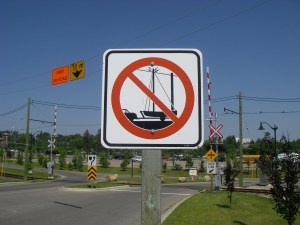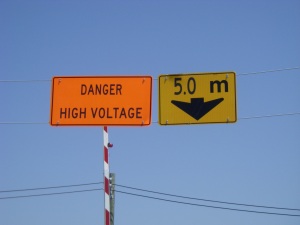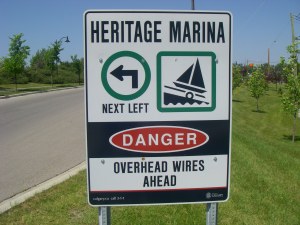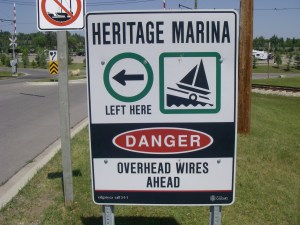Note to Reader: I’m not actually a mechanic, but I can impersonate one well enough to fool some cars.
Really, I don’t know why it took so long to discover these cars. We moved out to the country in 2000, and since then we’ve really needed to drive 4x4s, to date including: a ’91 Dodge Dakota (318 – 5.2, I think) , a ’97 Jeep Grand Cherokee (4.0), a little Toyota pickup (can’t remember the year offhand), and a BJ60 Diesel Toyota Land Cruiser (which was a real Charlie Foxtrot – a mistake from the outset). Since we’re talking about daily-drivers (an hour each way to/from work in the city), the Dakota and Jeep – though great cars – were a pretty serious lose in terms of gas economy, and the Toyota was a two-seater without provision for hauling our kids. So when I had the chance to finally cut my losses and dump the Land Cruiser as a parts car (for a thousand bucks – I had to swallow the four or so I had in it) I flipped the grand the next day into a ’99 Subaru Legacy Outback.
I think I fell in love with these guys with my first visit to the parts counter: There’s a signifcant difference between Subaru OEM and aftermarket thermostats, and I wanted to start eliminating variables. I stepped up and told the partsman I wanted a thermostat; he said “Coming right up” and turned to fetch it. I stopped him and asked whether he might need to know which model, year, engine, and temperature, and he replied “No, we only have one”. In all my years of pulling wrenches, I’d never heard such a thing.
And speaking of wrenches, I’ve been very pleasantly surprised by how few of them I need to work on this thing. To do just about anything, you need 10mm, 12mm, 14mm, and 17mm sockets and wrenches. A deep 12-point 14mm socket is about the most exotic thing I’ve used (for pulling heads). Compare that with the Jeep, which was a dog’s breakfast mix of standard and metric fasteners.
The 1995 Legacy Brighton w/ EJ22+5MT
Our first Subaru – the ’99 Legacy (with the EJ25D 2.5 litre DOHC and auto trans) – turned out to be a bit of a saga, but a few months after getting it we picked up another Legacy – a ’95 (with the EJ22 2.2 litre SOHC and 5-speed manual) with an eye to swapping the motor into the ’99. The Brighton is the base model – a car with a manual gearbox that didn’t come with a tachometer (!). Got it for $500, including noisy exhaust, body with a couple of rust spots, and a bad CV joint,. Driving it home, though, I realized I’d be an idiot to cannibalize it. So here’s what happened, to the nearest more-or-less:
- Car: $500
- Junkyard CV axle: $30
- Junkyard exhaust: $15
- Muffler shop to install junkyard exhaust properly i.e. weld in flex joint: $100
That’s all it took to make it roadworthy. After a month or two of driving the need for a little upkeep became apparent:
- New window crank: $15
- New rear struts – the old ones were getting creaky; I reused the springs. I don’t remember what I paid for them, but I see today they’re going for anything between $35 and $150, so let’s just go with $75 each: $150
Then I flew into a wild fit of customization:
- Junkyard trailer hitch: $25
- Junkyard roof rack: $5
- Retractable cargo cover (also from wrecker): $5
And an old car does need some attention over time:
- After about a year the alternator packed up, so a junkyard replacement: $25
- And a weird thing happened – when I tried to recharge the air conditioning the compressor seized. No idea why. Got another one from (you guessed it) the wrecker and it charged up just fine: $40
If you’ve been keeping track, that’s about $900 for a four-wheel-drive family wagon (the back seats fold down to double the cargo space) that has never failed to start – all the way down past -30 degrees without a block heater (though I’ve since added one for about five bucks). Other than routine stuff like oil changes and some new tires, that’s what it cost us for the first three years. Here’s a useful comparison: A friend of mine has a 4WD Volvo wagon. His shock absorbers cost $800 each.
The ’95 did use some oil, and eventually (fall 2014) there was a noticeable loss of power one day while towing one of the catamarans home from the lake. At 340,000 km a valve went bad and the engine lost compression in one cylinder. I disconnected that cylinder’s injector and we drove it that way until summer, when I pulled the motor. And since it had developed some drivetrain noise over the winter, the transmission came out as well (I was hoping it was just a clutch bearing, but once I got the motor out I figured it was actually the tranny’s main shaft bearings).
(Later…) The ’95 is done and back on the road. Cost of repair: About $400, including the used motor and transmission (from a ’98, I think), a new clutch disk, junkyard exhaust manifold/y-pipe (the new heads have single exhaust ports, where the old ones had dual ports), a few gaskets, and a pipe plug. The gentleman who supplied the motor+tranny also threw in a hatchback door (mine was rusting) for a case of beer (that he insisted I share in partaking; this is man’s commerce, mind you). With relatively little effort (and even less skill!) invested in the repair, this thing drives like new – the motor is strong and the transmission tight, and I’m really enjoying it. Total cost to date: Less than $1500.
The 1999 Legacy Outback w/ EJ25D+4AT
Okay, assuming it’s (finally) settling down, it’s time to relate the saga.
As I said, when I dumped the Land Cruiser for whatever I could get out of the miserable thing, I picked up the ’99 Outback – our first Subaru – the next day. It was in terrific outward condition, but came with the caveat that it’d had problems with overheating. Just a little research revealed that its motor – the 2.5L DOHC – had a history of these problems thanks to a bad head gasket design. Typically, one solves it by simply pulling the heads and replacing the gaskets, which can be done without lifting the motor. So over a few days in November I did just that – pulled the heads (losing some knuckle skin in the process – turns out that if you unbolt the motor mounts and raise it up just a couple of inches it makes a huge difference), sent them out to be milled flat (same day service!), bought the new gaskets and other assorted (cam, cover, etc.) seals, and stuffed it all back together. Let me add that the head torquing procedure on these things is Baroque, and that in the course of getting the timing belt right I found an error in the Subaru factory documentation that had dutifully been reproduced in the Haynes manual, but I got it done. It started on the first crank and ran beautifully… for exactly two days. Then the motor began issuing a horrible clatter that turned out to be a couple of connecting rod bearings that had been done in by the overheating even before I got the car. (This is when we bought the ’95, thinking it would be a good engine donor for this one. Many do that swap – the EJ25D-to-EJ22 – but as I explained above, after buying the car I thought better of it.) The following summer (or was it the summer after that? I can’t remember anymore.) I pulled the motor, figuring I’d basically be doing the bearings, but when I took the crank to the machine shop they told me it was too far gone. I found a short block on Kijiji for a couple of hundred bucks, swapped my heads onto it, and gave it another go.
It ran pretty well, but there was one bit of weirdness. The transmission didn’t want to shift into 4th (the highest) gear until the speed was way up near 130km/hr, and that ain’t right. As well, the tranny’s idiot light would occasionally blink while out on the highway, but the error never persisted. Finally, the tranny conked out and just wouldn’t shift properly at all at the same time as the heater core sprung a leak. I’ve been debugging stuff for a really long time, and if there’s anything I don’t believe in it’s coincidental unrelated failures, but that’s exactly what happened. I parked the damn thing until the following summer.
So, simultaneously with putting the new motor+tranny in the ’95 and doing general rehabilitation on the ’99 Forester (that I introduce later), I tried to sort out what was going on with this one. I jumpered around the heater core so I could concentrate on the tranny problem, and using one of those goofy do-an-ignition-switch-and-shifter-dance-then-read-the-blinkenlicht-code things found that the transmission control module was complaining about an engine load signal that it gets from the engine control module. To make a long (a couple of months, on and off) story short, it boiled down to my having failed to tighten down a crucial ground wire on the top of the intake manifold when I dropped the new motor in. Duh. I torqued it down, went for a flawless (as in: that high shift point even moved back down to where it belonged) test drive, and had some crow for supper. After that, replacing the heater core was just a couple of days of rather ugly grunt work:
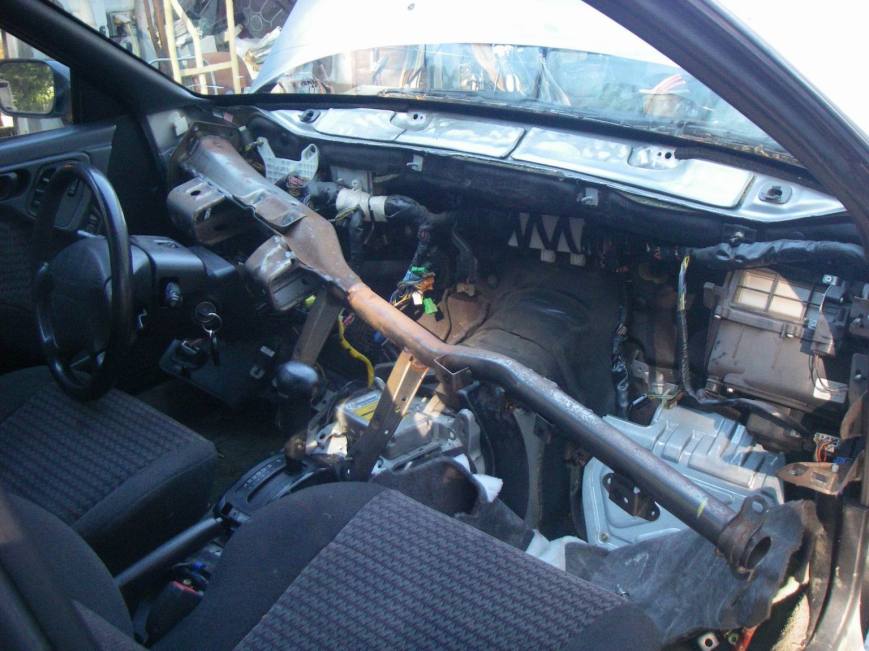
All in a day’s work.
and it’s now back on the road. Let’s see if it holds…
At this point, I’d like to take a little break to talk about the kind of people who are into Subarus. In a phrase: A better class of people. You know how, when you start driving a new kind of car, you immediately begin noticing every car on the road that’s the same as yours? Since getting into these, it’s been amazing how many we see out there – Subaru really seems to be some kind of sleeper in the car market; the brand that quietly dominates a category while going quite unnoticed by everyone else. In contrast, drive a Land Cruiser and you’ll be struck by how few of them are out there. It’s a brand favoured by fetishists – marginal personalities who, based on arcane logic and argument, do things like import right-hand-drive trucks that have spent their working lives underground in South African mines. Used parts? Fuggedaboudit. On the rare occasion that one hits the wrecker, the grapevine positively catches fire as the fanatics race for the parts. And Jeeps? Obviously they’re abundant, but most of the guys I’ve bought parts from (though I’ve few complaints about the parts themselves, including an excellent engine) have been slobs, hillbillies, and low-lifes. Not all, I hasten to add – I’ve met some really good folks too – but most.
On the other hand, Subaru people continue to surprise and delight. When I first joined the online forum I’m most active on, one of the first subjects that came up was that thermostat I mentioned up in the second paragraph. Now, I’ve long gotten used to people getting their backs up in conversation with me. It’s not because I’m being a dick, rather because I like to dig a little deeper and understand things, and what usually happens is that the people I’m asking think I’m challenging – or don’t believe – them (it’s a geeks vs. normals thing). When I pressed these guys over why the Subaru thermostat is significantly better than the aftermarkets, they didn’t ask why I was asking stupid questions. They put up the hysteresis curve and explained that it also has a much larger aperture for greater flow. Seems there’s a disproportionate number of engineers among Subaru owners. People I can talk to (and in this group, heavy cats, too. I do embedded systems, but one of the guys does satellite hardware.). I bought a motor last summer from a Ph.D. student in psychology, and this summer’s motor and tranny are coming from a retired mechanical engineer who’s the most enjoyable company for pulling wrenches. I’ve got other friends locally who drive them, including a former business partner who used to be dean of sciences at our university. As I said, these cars seem to attract a better class of people.
The 1999 Forester w/ EJ25S+4AT
We’re now up to three: The above two, plus a ’99 Forester (2.5litre SOHC auto) that came from a pal for a couple of hundred bucks as he was cleaning up his dad’s stuff. It needed some wiring tidied up, a new stereo, and a little TLC. It still needs an oxygen sensor and there’s a harsh 4-3 downshift when you step on it, so it’s a work in progress. But still, it’s 4WD and easy and cheap to work on, and it’s already my wife’s daily driver.
Obviously, these cars aren’t 1-ton pickups or serious offroad bashers. But when it comes to everyday light- to medium-duty use, I don’t know why other cars even bother showing up.
July 2017 Update:
We drove the Forester for a couple of summers, but by last fall the transmission had just become too nasty to continue to use. That 4-3 downshift under power wasn’t just harsh – it felt like you’d been hit from behind. So we parked it for the winter. The $2000+ estimate I received from a transmission shop was a nonstarter, so once the wrench-pulling weather returned in the spring, I counted myself lucky to find the same year and model in the local boneyard – important because that’s the only car that transmission was used in. And given that Foresters aren’t nearly as plentiful as Legacy/Outbacks, I jumped at it. Spent a whole day dropping it by myself, a task exacerbated by my: a) having had shoulder surgery in January that I was making an effort not to blow, and b) having forgotten to bring a water bottle along. Once it was out and loaded into my car I couldn’t get a Slurpee fast enough.
Now, here’s the thing: When you get a major component like that from a wrecker, you don’t know whether it’s any good. Sure, they guarantee the stuff so if it’s DOA I can get my money back. But that’s little comfort after days of effort expended pulling it in the yard, dropping the bad one from my car, and bolting in the new one – all to then find out whether the replacement is good, because it’s not possible to test it before installing it. About all one has to go on is the condition of the donor car: If the body is sound a mechanical failure probably led it to the yard and the odds aren’t good. If there’s body damage there’s a better chance it was mechanically sound before the crash. So you throw the dice and invest $130 and a lot of effort.
This time it came up seven, and I couldn’t be happier.
